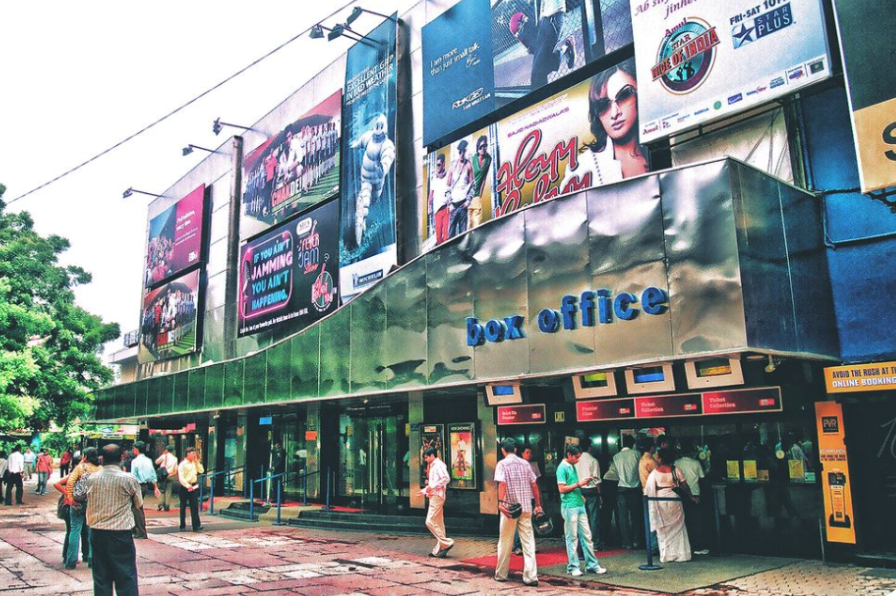
Ajay Bijli, the founder of PVR Group joined his father’s transport business, Amritsar Transport
Company in 1988. However, he decided to also focus his efforts on Priya Cinemas (originally called Priya Love Vikas Cinema) which his father had acquired in 1978. The property had lost its reputation and ceded ground to rivals as it was unable to launch popular movies.
Ajay started the cinema’s turnaround by targeting a niche audience, playing Hollywood movies and refurbishing the interiors. Taking inspiration from Sterling Cinema Mumbai, he renovated Priya by installing a Dolby Sound System, adding life and color to the grey interiors, renovating the toilets and providing uniforms to the staff. Coinciding with these changes, the Indian government partially decontrolled movie ticket prices as well, propelling Priya’s quick ascent.
The first multiplex in India
After his father passed away and a devastating fire at the transport facility, he decided to focus on the cinema business. Priya, by then, had become a hub where people met in the city (Delhi), it also successfully attracted outlets like McDonald’s, Archie’s and Nirula’s-“potentially our answer to Times Square or Leicester Square?” Bijli wondered. Bijli now wanted to introduce a western-style multiplex, but the problem was the lack of expertise.
At that time, Ajay met Village Roadshow‘s Asia MD John Crawford and the “Priya Village Roadshow” was born, which later went on to become PVR. The venture set-up India’s first multiplex with 4 screens after leasing Anupam Cinema at Saket–Delhi with the name Priya Village Roadshow Anupam 4. According to Bijli, “There were kilometer-long queues when we opened. And our campaign was very explicit: Four cinemas under one roof, 24 shows a day, multiple cinema complex.” Since then the PVR chain has rapidly expanded and today boasts a pan India presence across 71 cities covering 845 screens, making it the largest multiplex player in the country.
Delhi’s Priya Cinema: What the iconic theatre and adjoining Basant Lok market mean for the city
Priya Cinema and Basant Lok Market were the hub for many of Delhi’s youth in the 80s and 90s. While Priya defined the movie-going experience with people giving standing ovations after films, Basant Lok Market was the place of many firsts — first dates, first drinks and first fine-dining-without-your-parents experiences.
Changing the way we watched movies
Picking Priya over other cinemas was a no-brainer. In the early years, when you went with your parents, you got treated to balcony seats. With friends, it was the rear stall, or maybe you even settled for the front few rows and ended up with a crick in the neck after the show ended. The waiting area outside the balcony housed the ‘100 Years of the Movies’ section, where there was one poster representing each decade of cinema.
Watching a Hindi blockbuster at Priya was an experience in itself. At a Thursday night preview of 3 Idiots, the entire cinema stood up in unison to give a round of applause. It was akin to watching a film at a festival. As Vidya Sharma scores that last winning goal in Chak De India, the entire cinema cheered as if we had actually won the World Cup.
A Simpler Time — with so much to offer
Basant Lok was the first upmarket shopping centre that had everything to offer for a range of age groups and budgets. From the first McDonald’s to open in Delhi, to Nirulas and their delectable hot chocolate fudge, the market would be filled with teenagers smoking their first cigarettes, bingeing on junk food without telling their parents, or playing video games (remember Reliance Web World?) for hours on end. Before Gurgaon lured the youth with its massive amounts of brewed beer, or Nelson Mandela Marg turned into our own version of Rodeo Drive, Basant Lok was where one would have their first date. Their first drink. Their first fine-dining-without-parents experience.
The undisputed nucleus of South Delhi
Basant Lok was cosmopolitan — it brought together people from all walks of life. And whether you were middle class or not, sitting inside Priya Cinemas felt like luxury, despite cheaper ticket prices. To rival Basant Lok Market took a lot. Ansal Plaza, near Siri Fort, tried, and while it succeeded, it never had the same effect on the youth. There was Anupam in Saket and Chanakya (which had nothing but a single screen and some epic food). But Priya used to win, every time. This is why its transformation is significant — it represents a change in the way individuals and communities came together to interact at a specific cultural point for decades. The way the market has transitioned from the 80s mirrors the way in which the city has grown.
